While many of Europe’s big leagues kicked off their 2024/25 campaigns in recent days, Brazil’s Série A is heading into the latter months of its 2024 season, and the title race is seriously heating up.
At the time of writing, just five points separate the top four teams after 22 & 23 games — Botafogo are the current league leaders.
While Botafogo’s defensive record is not highly desirable, their potent attack is the reason they are in search of their third Brazilian title and their first since 1995.
Head coach Artur Jorge deserves credit for transforming Botafogo’s attacking output and, with it, their title prospects.
Jorge joined the Brazilian club in time for the beginning of the 2024 campaign after leaving Braga – a club he has a long history with as both a player and a coach; last year, Total Football Analysis analysed Artur Jorge tactics at Sporting Braga.
Attacking prowess was a huge part of his philosophy at Braga, and so far, that has carried over to Brazil — Botafogo are currently Série A’s top goalscorers, which is why we are bringing an analysis of their attacking tactics.
This Botafogo scout report will provide a tactical analysis of that strong attack, highlighting some of the key principles in Jorge’s tactics at Botafogo.
It is noteworthy that, while Botafogo have been dominant from set plays this season, scoring from nine corners, we will not be dissecting their approach in these moments as we released a set-piece analysis around their corner routines just last year.
While there may be some new elements this season, the core of their corner domination does not yet warrant a fresh analysis.
Intentionally Triggering The Opposition Press
Building from the back is something that was discussed in the aforementioned analysis of Artur Jorge’s Braga team, and some of those principles followed him to Brazil.
While Botafogo does have games where they dominate possession, generally speaking, their games are more even (in terms of possession percentage).
They have averaged 51% possession so far this season.
But they have shown real strength in playing out from the back into midfield by luring the opposition into triggering the press in certain areas.
The aim with that is to exploit the space left by the opposition player(s) who execute the press, as seen below.
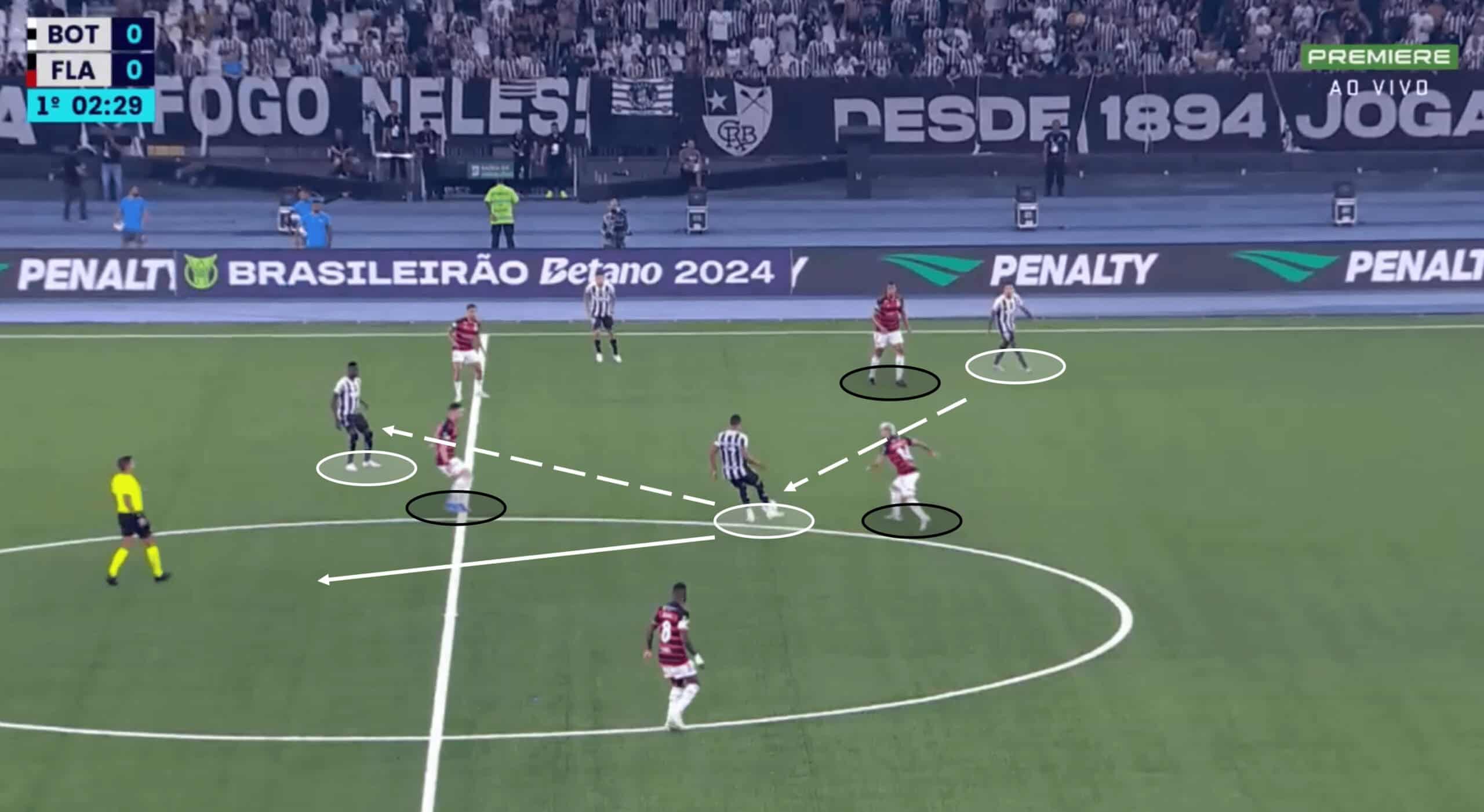
With the ball at the RB spot, many players and teams would’ve taken the safer option in playing a chance pass down the flank and into the channel for the striker to chase, but Botafogo already had the opponent where they wanted them.
With these tactics, timing is everything, so in certain scenarios, Fogo will look to take their time in between passes, which is more likely to encourage the opponent to trigger that press.
A well-timed, well-executed pass into the deep midfielder is enough to cause the opposition to swarm the ball in a central midfield area — a common place for a press to occur — but since Fogo are looking for this, they know exactly how to deal with the press.
Awareness is a critical individual trait in these moments – with two opponents looking to smother you to gain possession, you must know where your next pass is going to be, and Botafogo, more often than not, do know – a quick forward pass into, in this case, the higher midfielder, who can then drive possession forward.
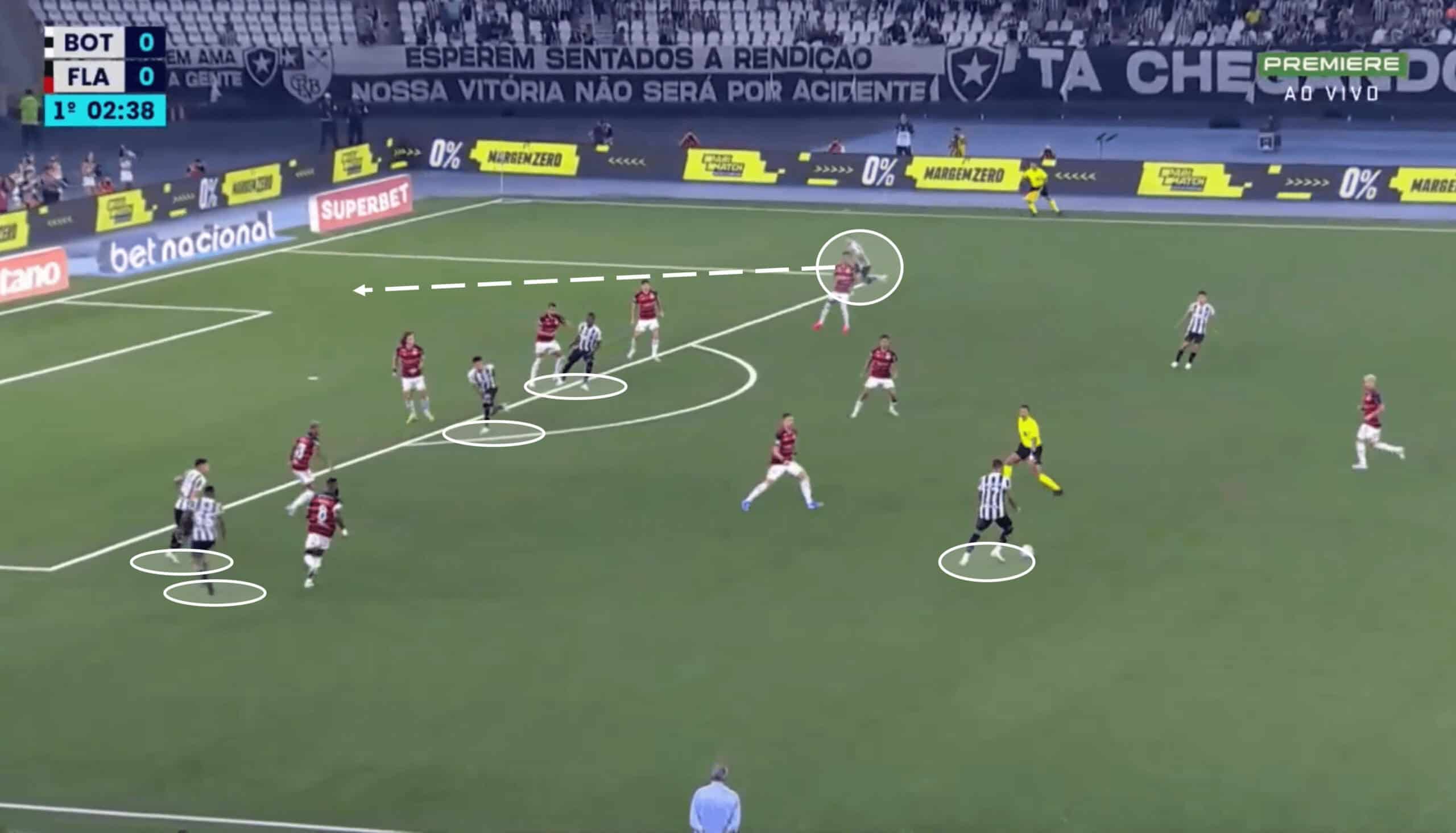
A major byproduct of these tactics, and one that Jorge deliberately looks to incorporate, is the opportunity to allow players to break forward once they get past that initial opposition press.
The image above shows this—the opposition scrambled to get back and deal with Fogo’s high attacking presence, and it isn’t just about having the numbers in the final third but also where they are positioned.
Options on either flank, as well as a strong central presence, give the man on the ball an array of options to select.
This is where individual technical ability complements the tactical side of things, as pass execution has to be spot on in order to fully capitalise, just as Botafogo did in this scenario.
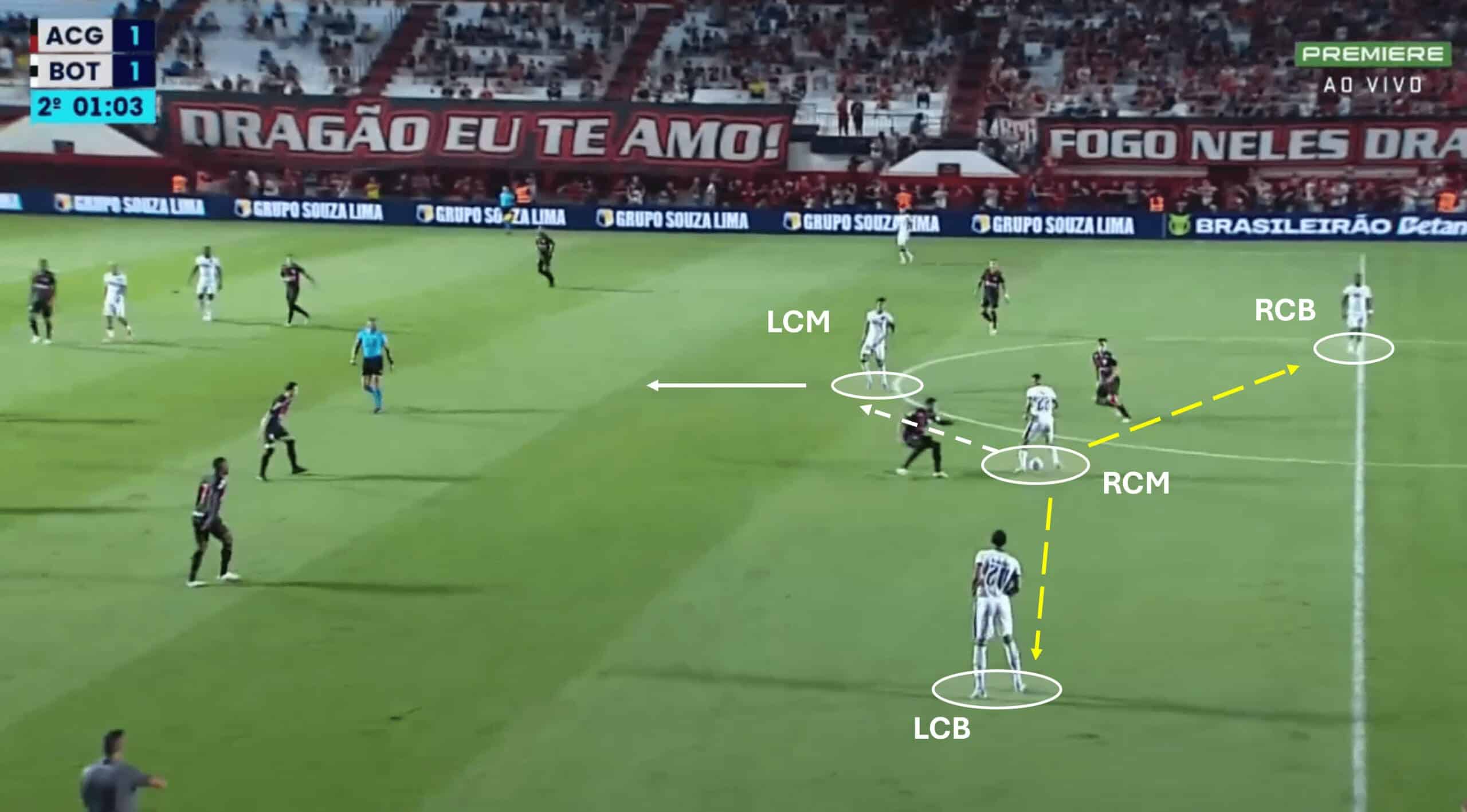
This example shows the same tactical principles as the first image but shows us how Botafogo look to deploy these tactics in general possession situations where they have more control of the ball.
More often than not, Fogo deploy either a 4-4-2 or a 4-2-3-1 — both of those formations work perfectly for what they are trying to achieve as it involves one central midfielder dropping deep to align with the CBs, and the other CM positioning slightly further forward to be the next passing option to initial CM.
Notice how the CBs split and push wider, allowing for that makeshift back three.
We mentioned earlier that timing is critical, and again, Botafogo are no strangers to taking their time in the initial stages of the build-up phase, passing the ball between themselves at a casual pace the back until the opposition decide to trigger the press – usually on the central player of the back three.
In that moment, that injection of pace into the build-up comes in, with a quickly executed pass into the higher midfielder, who can drive possession forward into the final third.
Variety In Chance Creation
We’ve established that Jorge’s Botafogo are currently Brazil’s deadliest team in attack, and we have the data and the visual match evidence to underpin that notion.
41 goals (or 1.58 per 90) is unmatched by any team in Brazil’s top flight, yet Botafogo only register 10.34 shots per 90, which falls below the league average.
What makes them so lethal in attack is not how many shots they attempt but the quality of chances they produce and how well they take them – 34.33 xG is the second-highest in Série A, and their shot accuracy rate of 44% is the leading figure.
As discussed below, much of this stems from our ability to create chances in a multitude of areas.
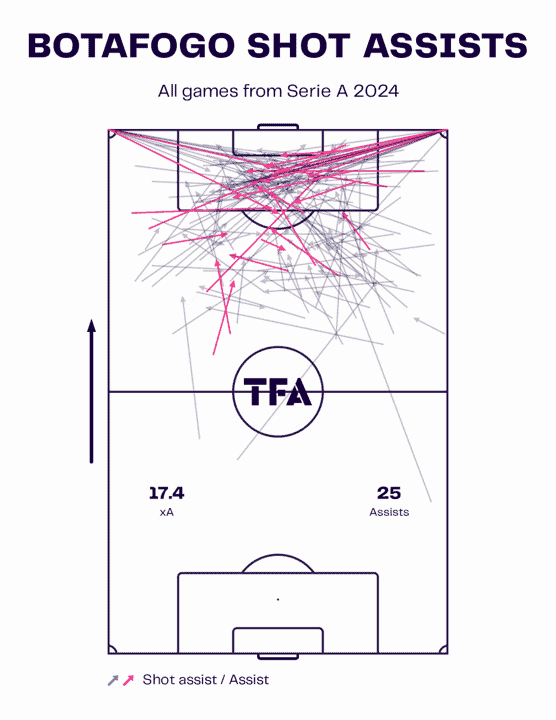
What may stand out initially is the number of assists from corners and short pass assists to set up a long shot—Fogo has scored seven goals from outside the box so far this season.
However, what we are interested in here is the level of chance creation, particularly from wide areas and half spaces – Botafogo have a real knack of kicking up the speed of an attack in the blink of an eye, and this can really help them move possession into dangerous areas in quick time.
Much of their dangerous play is done on a low number of touches, with passing combinations and fluid passing patterns playing important roles in Botafogo’s attacking tactics – their passing rate of 14.4 is among the highest in the division.
Interestingly, despite being deadly from wide and half spaces, Botafogo have one of Série A’s lowest cross attempt averages, making 12.5 per 90.
However, similar to their shooting, quality does not always prevail over quantity when it comes to deliveries into the box.
Plus, many of the dangerous deliveries from those wide areas are often cut-backs and passes, so they would not register as a true cross.
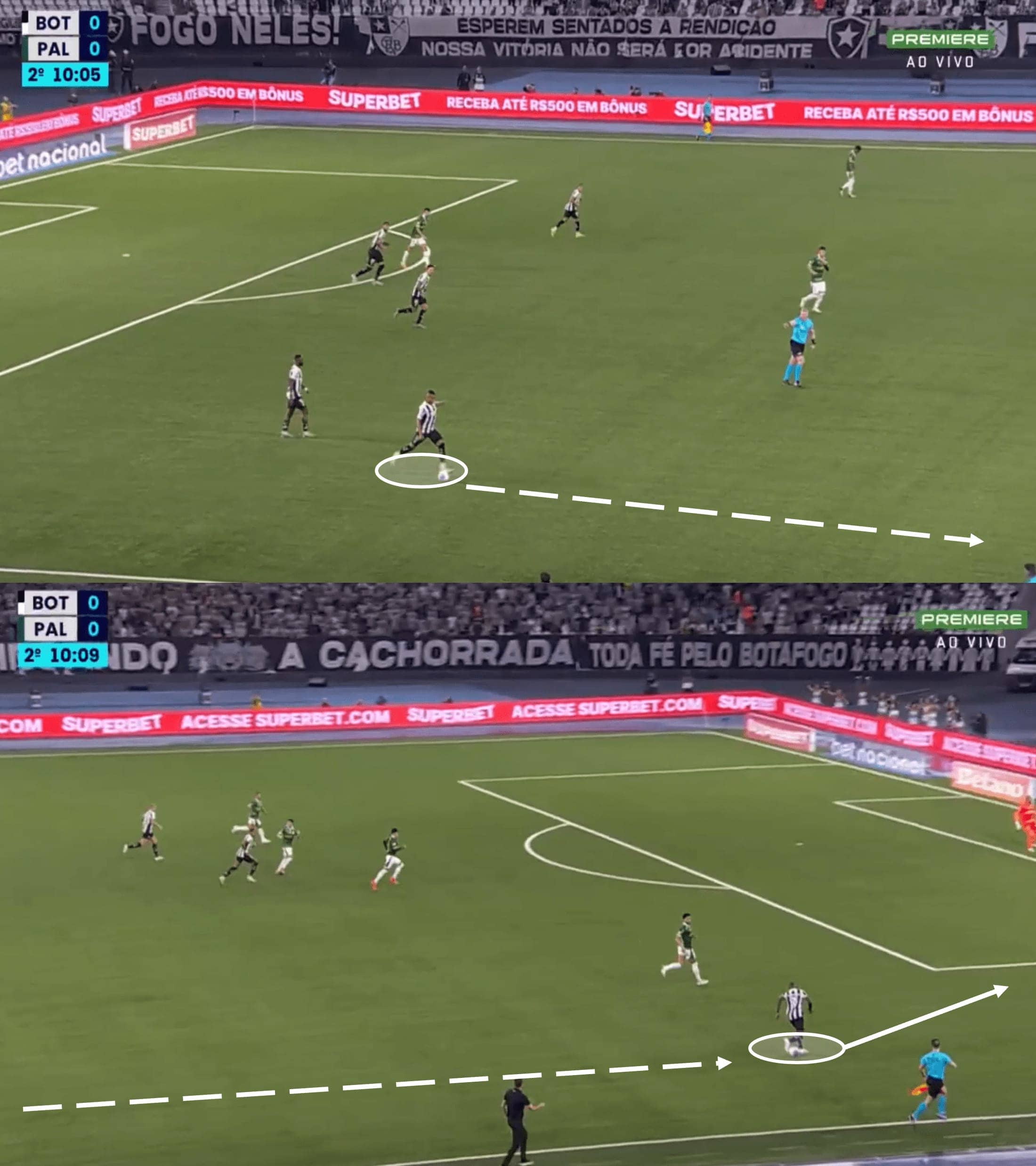
One key element that fits Botafogo’s tactics perfectly is the utility of progressive passes.
Jorge’s side make 64.88 progressive passes per 90, which is one of the league’s highest engagement rates, and Fogo use them to break into some truly dangerous areas, especially in wide areas, as you see in the image above.
With just one progressive pass down the flank, Botafogo go from deep in their own half, to deep in the opposition half with the ball under firm control and a strong supporting presence to bolster the attack.
As we mentioned earlier, individual quality in key moments is vital for these tactics—in scenarios like the one above, players must beat opponents in 1v1s to get into the box and make the all-important pass.
And when it comes to that all-important pass, Botafogo are hard to defend against — 3.09 key passes per 90 is the third-highest in the division.
They’re also fond of through passes, which, given the fluidity and pace of their attacking play, is no surprise — they average 5.02 through passes per 90, with only one team in the league beating that engagement rate.
Danger In Transitions
Another thing that will perhaps come as little or no surprise is that Botafogo can be a destructive force in attacking transitions—their fast-paced approach comes in clutch in these moments.
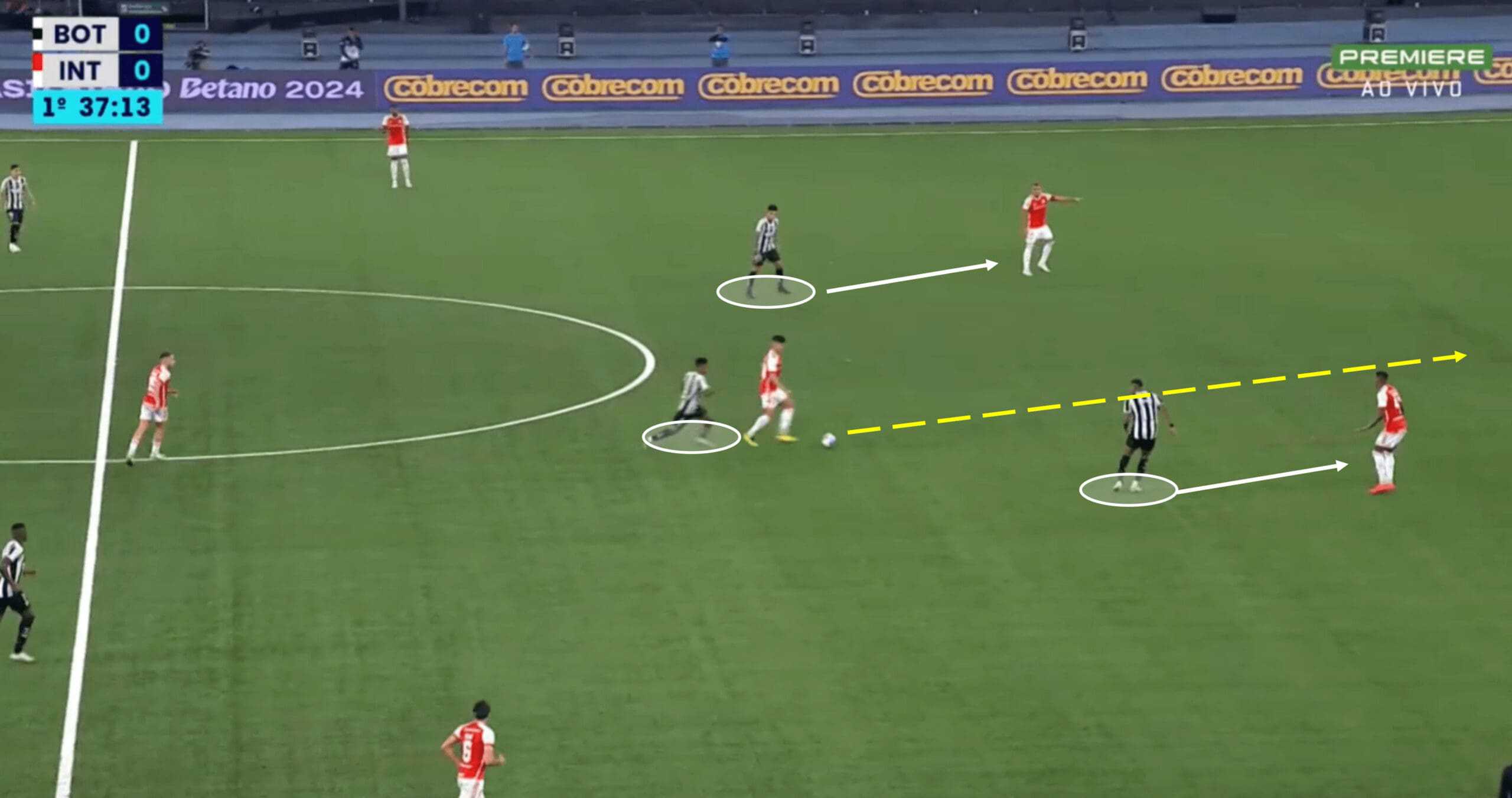
They aren’t a particularly high-pressing side — their challenge intensity rate of 5.3 is just above the league average, and their PPDA of 10.25 also makes them slightly more aggressive than the league average — their ability lies within knowing when and how to execute an effective press.
Often, it is as simple as it looks in the image above — the two forwards occupying the CBs and a CM coming in to press the ball in the middle.
They know that the ball will likely go from that midfielder back to the keeper. One of the forwards will then press the keeper, forcing him to go long, where Fogo will look to sweep up the ball and capitalise on the turnover in possession.
While this is a success for Botafogo, it is even better for them to steal the ball in the final third before the opponent makes the pass back to the keeper.
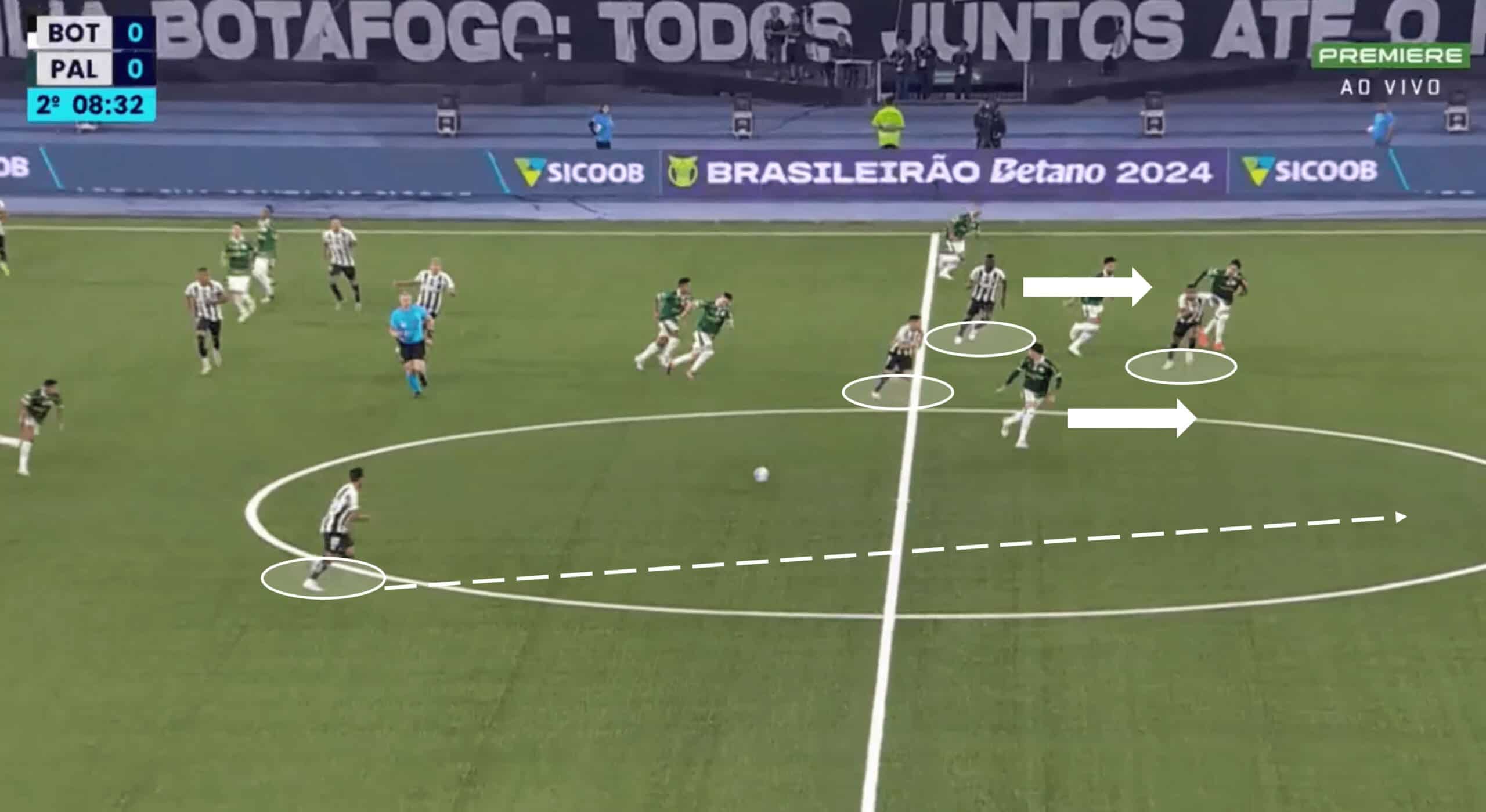
The example above shows a loose ball making its way into the path of a Fogo shirt from the left side of the pitch over to the right, following a scramble for the ball after a Botafogo throw-in deeper in the half.
Often, simplicity is the key to capitalising on attacking transitions—pace and decisive execution go hand in hand.
Before the ball even reaches the expectant midfielder, three Fogo players start making bursting runs forward, looking to get in behind the opposition defence.
The run of the highest forward in the image above is met by a perfectly weighted, first-time pass from the aforementioned midfielder, and, in the blink of an eye, Fogo create a chance from an attacking transition.
Conclusion
Botafogo were agonisingly close to winning their third league title last year, but a major blip in form at the season’s end derailed all hope of glory – two wins from their final 15 games destroyed all hope of a long-awaited triumph: they will be looking to rectify that this time around, with the league’s most-feared attack at play.
Time will tell whether or not they can maintain the level at which they are playing, the results the attacking unit is producing—but despite the old mantra, if Fogo go on to win the league this year, chances are it will be because of their potent attack and not their defensive record.

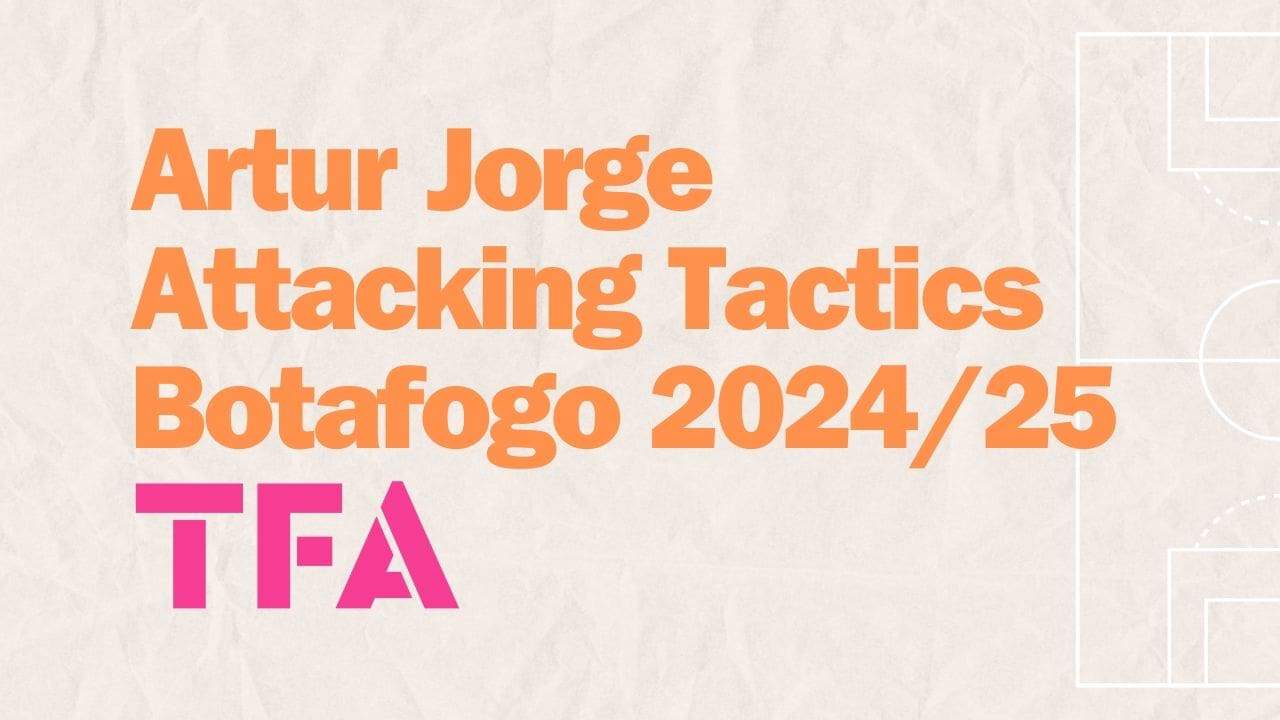




Comments